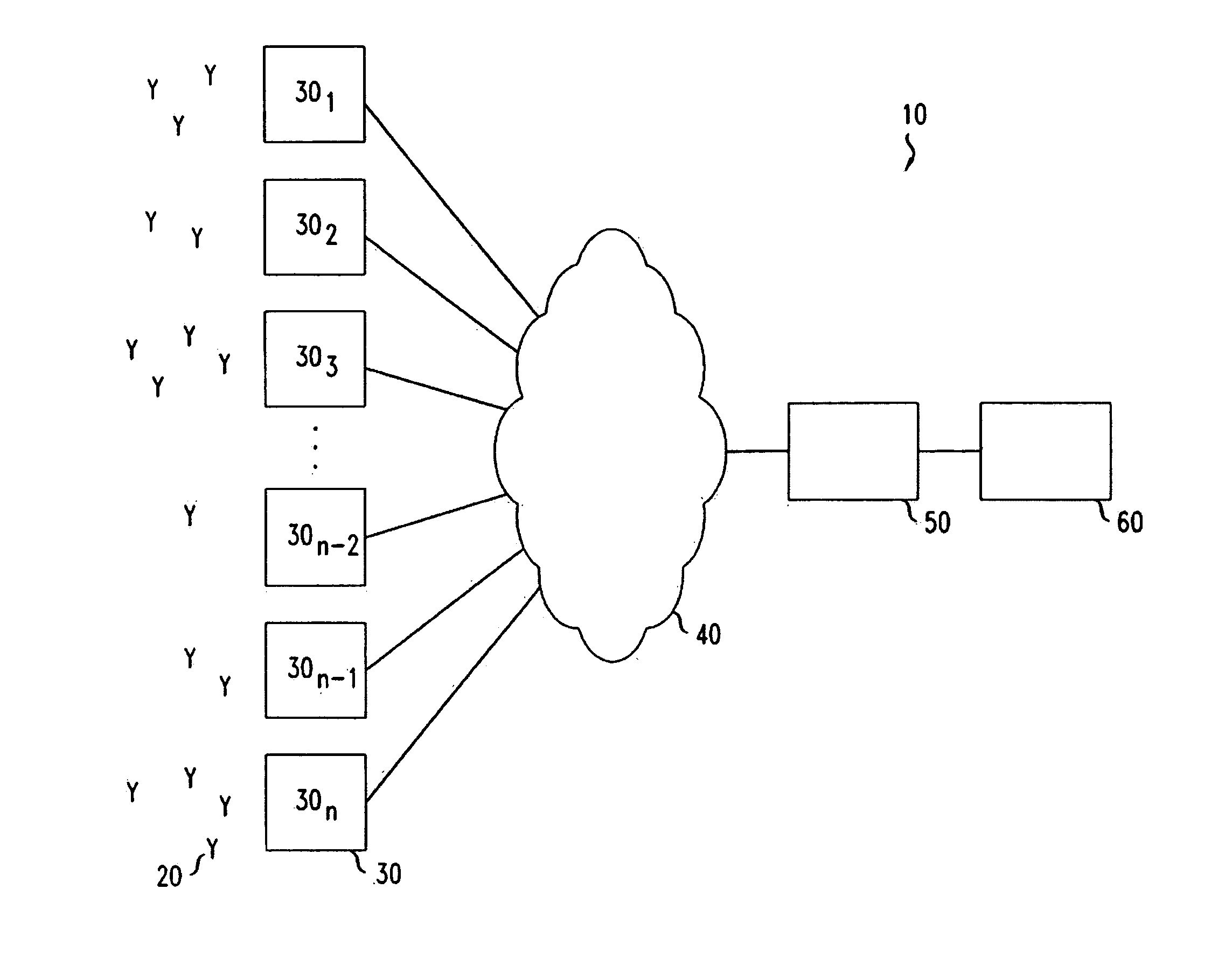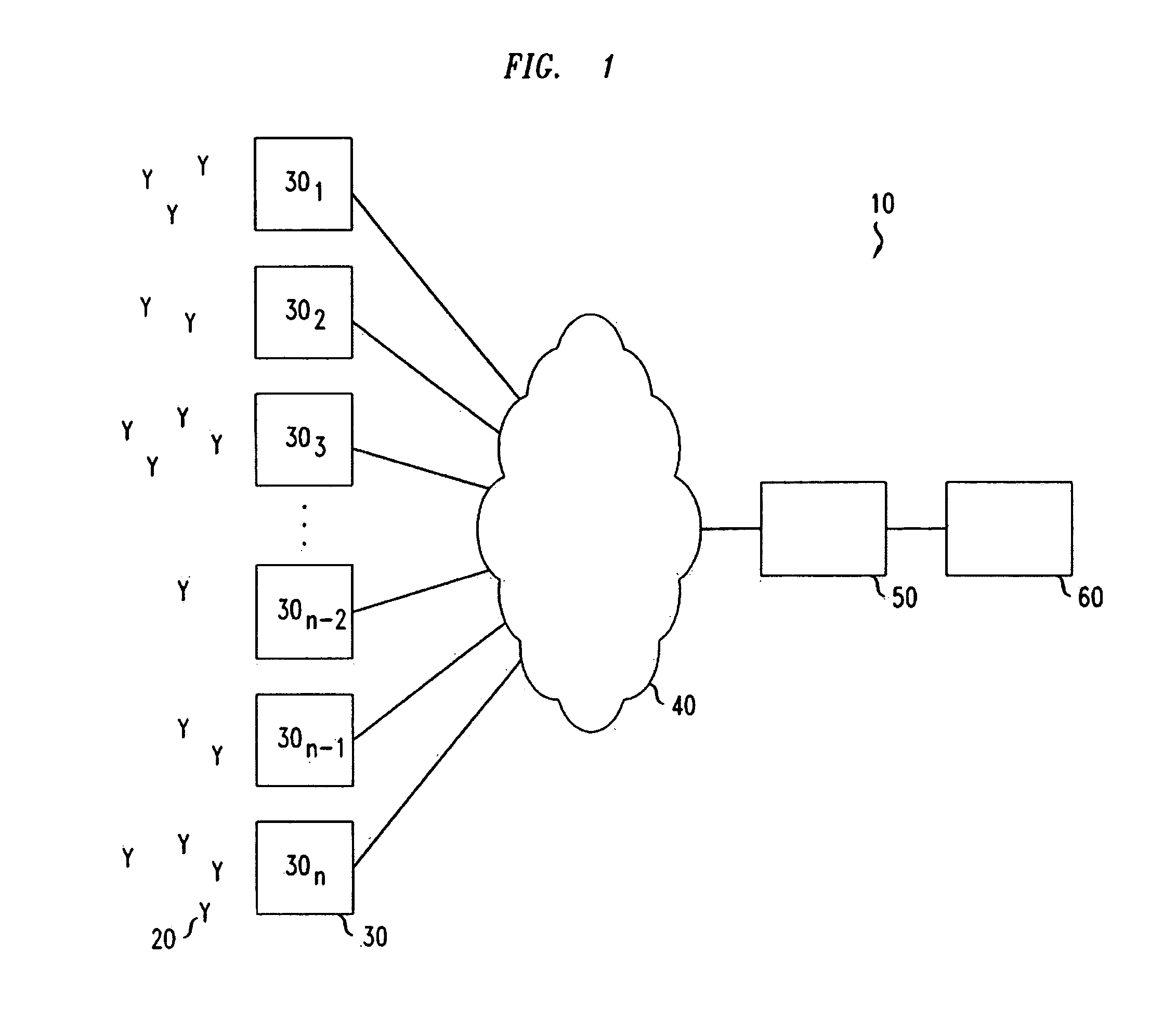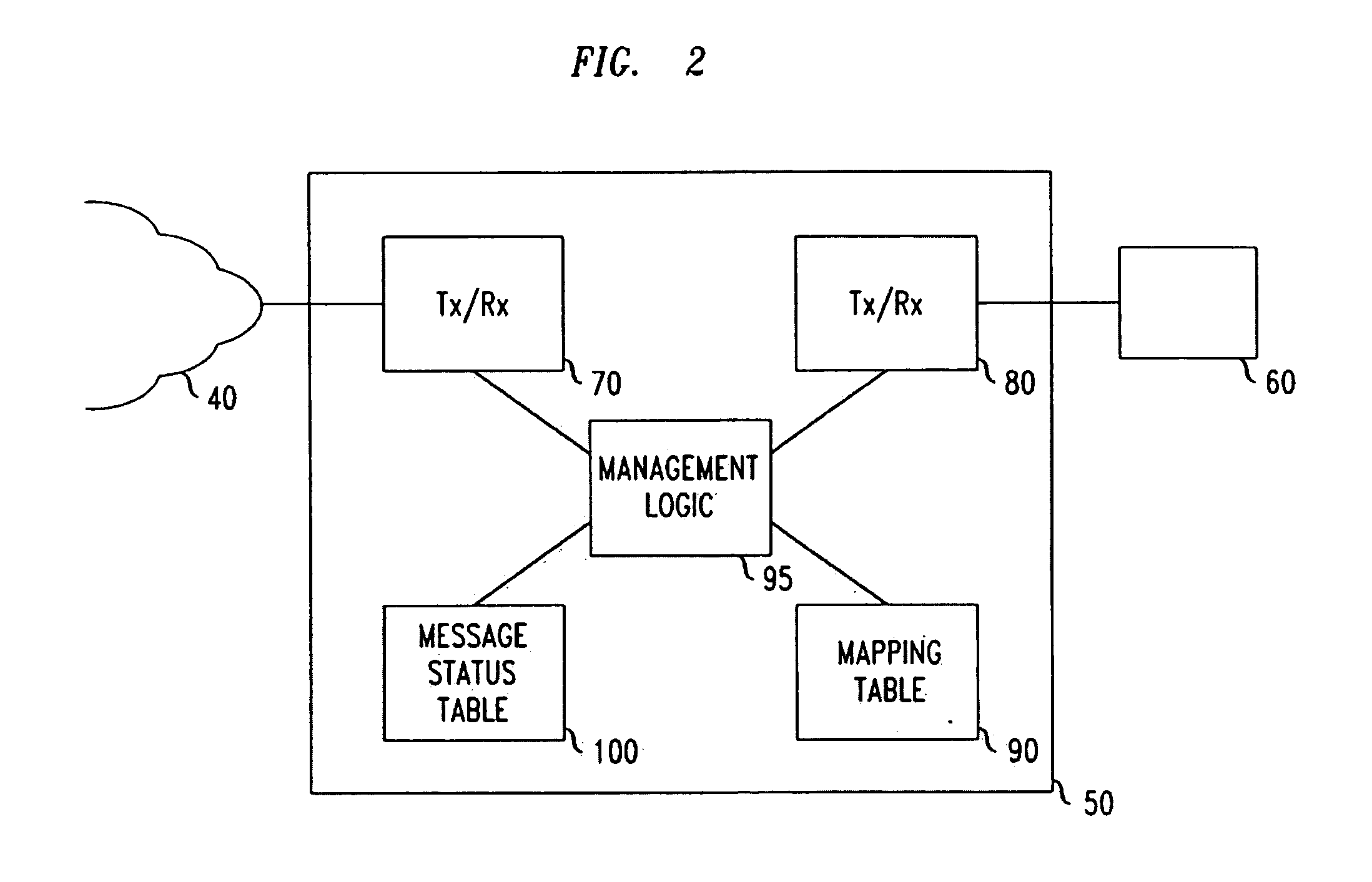Message transmission
a message and transmission technology, applied in the field of message transmission, can solve the problems of difficult to achieve such a short time period in an environment where control is highly centralised, take a long time, etc., and achieve the effect of speeding up the time taken for identified base stations, reducing the amount of traffic required, and reducing the amount of messages
- Summary
- Abstract
- Description
- Claims
- Application Information
AI Technical Summary
Benefits of technology
Problems solved by technology
Method used
Image
Examples
Embodiment Construction
[0047]FIGS. 1 to 3 illustrates the main components of a telecommunications network, generally 10, accordingly to one embodiment. As shown in FIG. 1, user equipment 20 roam through the telecommunications network 10. Base stations 301 to 30N are provided which support respective cells. A number of such base stations 301 to 30N are provided, which are distributed geographically in order to provide a wide area of wireless communications coverage to the user equipment 20. When user equipment 20 is within a cell supported by a base station 301 to 30N then communications may be established between the user equipment 20 and that base station 301 to 30N over an associated radio link. Each base station 301 to 30N supports a number of sectors within each cell. Typically, a different antenna within a base station 301 to 30N supports an associated sector. Accordingly, each base station 301 to 30N has multiple antennas and signals sent through the different antennas are electronically weighted to...
PUM
 Login to View More
Login to View More Abstract
Description
Claims
Application Information
 Login to View More
Login to View More - R&D
- Intellectual Property
- Life Sciences
- Materials
- Tech Scout
- Unparalleled Data Quality
- Higher Quality Content
- 60% Fewer Hallucinations
Browse by: Latest US Patents, China's latest patents, Technical Efficacy Thesaurus, Application Domain, Technology Topic, Popular Technical Reports.
© 2025 PatSnap. All rights reserved.Legal|Privacy policy|Modern Slavery Act Transparency Statement|Sitemap|About US| Contact US: help@patsnap.com



